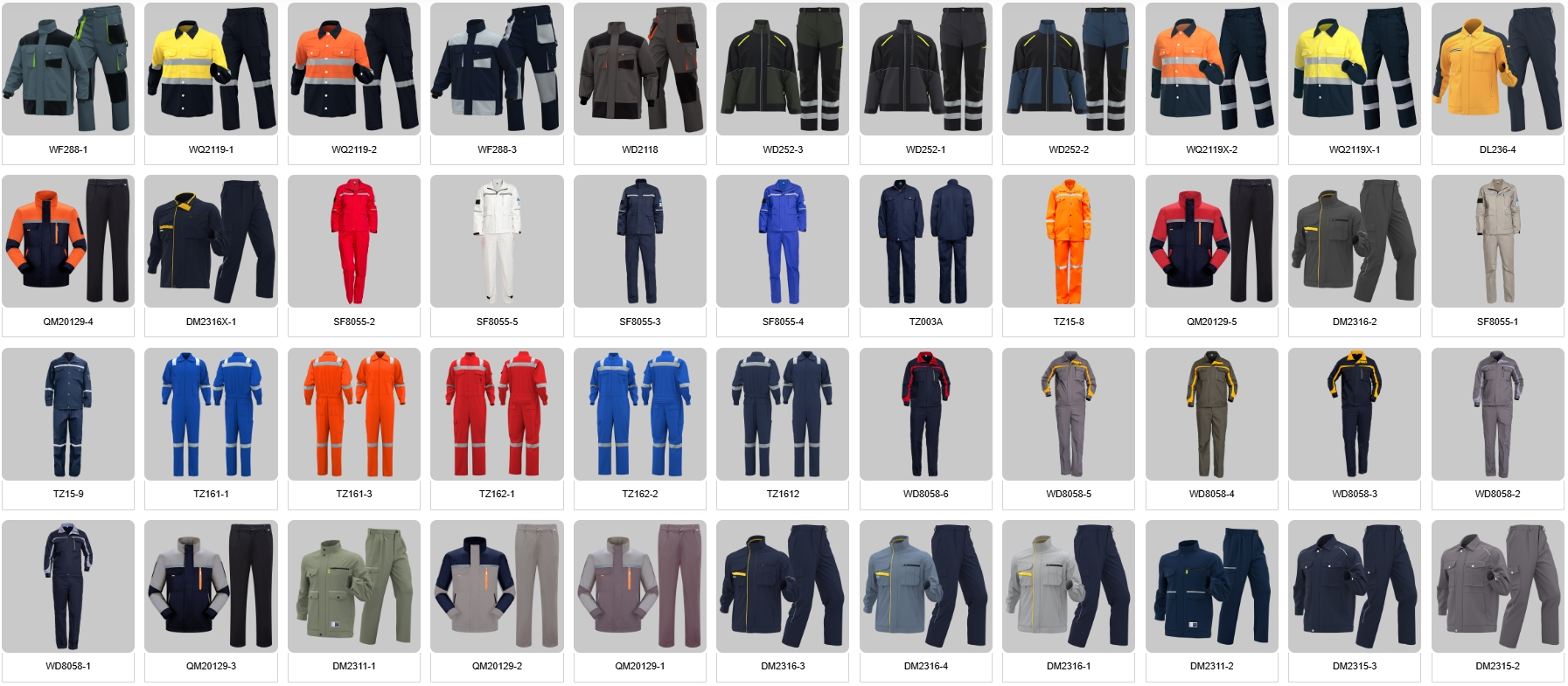What defines workwear?
Author:HAIYUAN TIME:2025-10-09Read:
That's an excellent question because "workwear" has evolved to have two distinct but related meanings. At its core, workwear is clothing designed and chosen for its durability, functionality, and safety in a specific work environment. Here’s a breakdown of what defines workwear, covering both its traditional and modern interpretations.
1. Traditional / Occupational Workwear: The Primary Definition
This is the original and most literal meaning. It's clothing worn for the physical act of labor, defined by three key pillars:
A. Core Principles:
- Durability & Longevity: The fabrics and construction are built to withstand abrasion, repeated washing, and harsh conditions.
- Fabrics: Denim, canvas, duck cloth, heavyweight cotton twill, and ripstop fabrics.
- Construction: Double-stitching, bar-tacking at stress points (like pocket corners), and reinforced knees and elbows.
- Functionality & Utility: The design is focused on practicality, not fashion.
- Features: Multiple pockets (cargo, tool, rule pockets), hammer loops, reinforced tool holders, and easy-to-use closures like zippers and heavy-duty snaps.
- Safety & Protection: This is paramount in many industries.
- Examples: High-visibility (hi-vis) colors and reflective strips for road crews; flame-resistant (FR) clothing for welders and electricians; cut-resistant materials for loggers; steel-toed boots for construction; and chemical-resistant coveralls for cleaners.
B. Iconic Examples of Traditional Workwear:
- Denim Jeans & Overalls: Originally for miners and farmers.
- The Work Shirt: Often made of chambray or heavy cotton, with a relaxed fit for ease of movement.
- Coveralls & Boiler Suits: Worn by mechanics, engineers, and painters to protect underlying clothing.
- Logger Shirts: Made of thick buffalo check or tartan flannel for warmth.
- Work Boots: Steel-toed, waterproof, and with rugged soles for grip.
2. Modern / Fashion Workwear: The Evolution
This is where the definition has expanded. Starting in the late 20th century and exploding in the 21st, the aesthetic of traditional workwear was co-opted by fashion.
What defines Fashion Workwear?
- The Aesthetic of Labor: It borrows the look of functional clothing but is often worn in non-labor contexts. The appeal lies in its association with authenticity, ruggedness, and utilitarian simplicity.
- Heritage and Quality: Fashion workwear often emphasizes heritage brands (e.g., Carhartt, Dickies, Red Wing) known for their quality and history. The "worn-in" look is desirable.
- Adapted Functionality: Designers take functional elements and refine them. A cargo pocket might be made with better fabric and slimmer cuts; a work shirt might be tailored for a better fit.
Key difference: A fashion workwear jacket might be made of a stylish waxed canvas with functional pockets, but it's worn to a cafe or office. A traditional workwear jacket is worn on a construction site and is chosen specifically to protect the wearer and carry tools.
How to Identify Workwear (In Both Contexts)
Look for these hallmarks:
- Robust Materials: Denim, canvas, twill, leather, corduroy.
- Utilitarian Details: Visible stitching, bar tacks, metal rivets, reinforced patches.
- Functional Pockets: Bellows pockets, patch pockets, ticket pockets, tool holders.
- Durable Hardware: Metal buttons, heavy-duty zippers (like YKK), snaps.
- A Rugged Silhouette: Clothing that allows for movement, often with a slightly boxy or relaxed fit in its traditional form.
Workwear vs. Related Styles
- Workwear vs. Utility Wear: Very similar, but "utility wear" often focuses more on the technical, pockets-everywhere aspect (think techwear or tactical gear), while workwear is rooted in blue-collar traditions.
- Workwear vs. Business Casual: Business casual is defined by its professional, office-appropriate look (chinos, polo shirts, blazers). Workwear is inherently more rugged and casual, though the lines can blur with "smart-casual" outfits that incorporate a work shirt or chore coat.
Summary
In conclusion, workwear is fundamentally defined by its purpose. In its purest form, it is practical armor for labor. In its fashion form, it is a style that celebrates the honesty, durability, and functional beauty of that original purpose.

